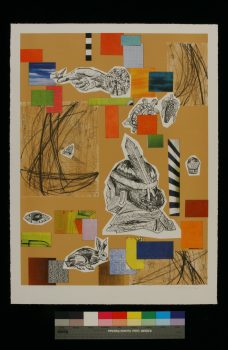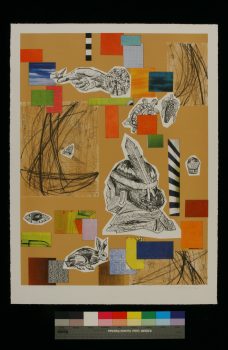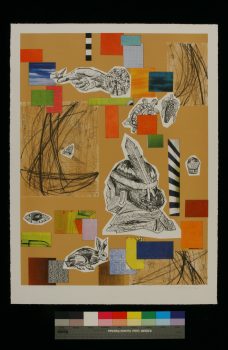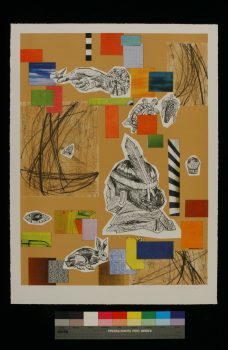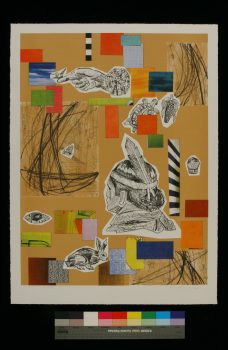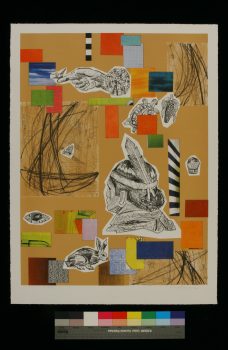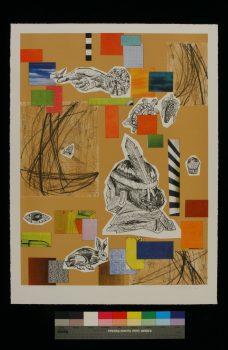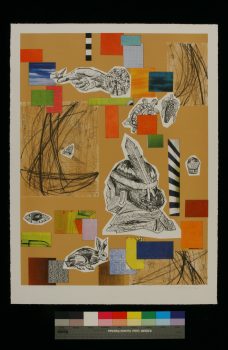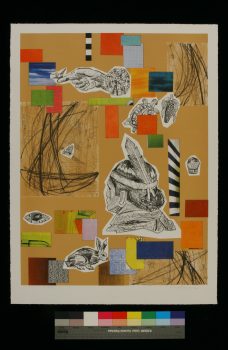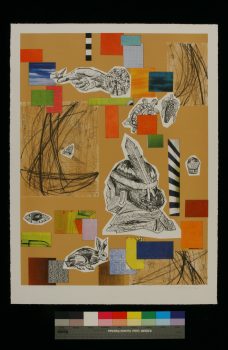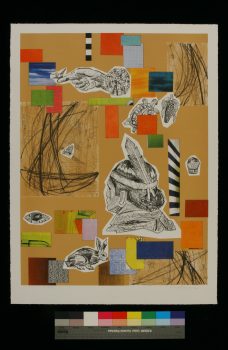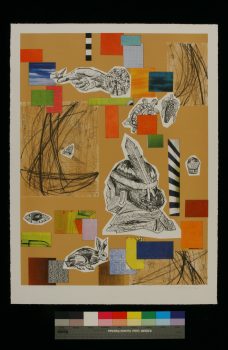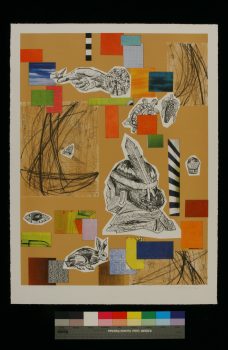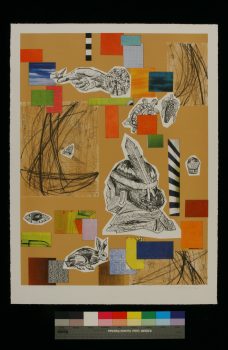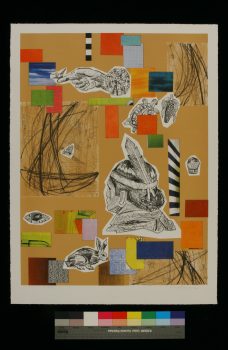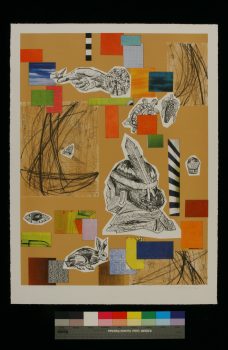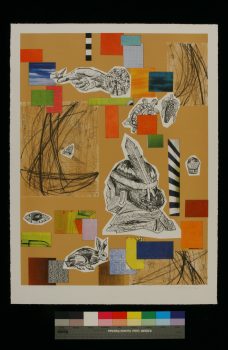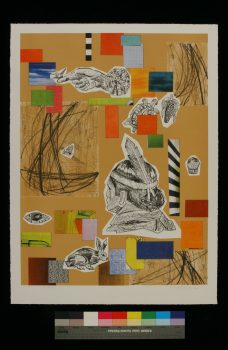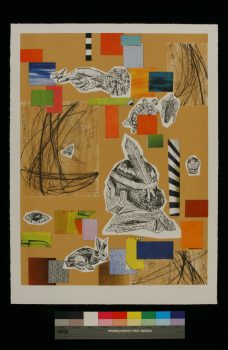
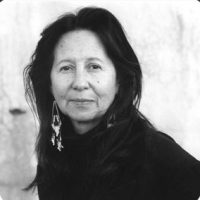
“I see myself as a bridge builder. My art, my life experience, and my tribal ties are totally enmeshed. I go from one community with messages to the other, and I try to enlighten people.”
Since her emergence as an artist in the 1970s, Jaune Quick-to-See Smith has had a unique voice in American art. A woman artist from the Flathead Indian Nation in Montana, she is one of America’s best-regarded contemporary artists with the invaluable perspective of an “outsider.” Smith has worked in a variety of media and has addressed a range of subjects, but is largely interested in the issues related to her Native American identity. As she says, “In my work I use humor and satire to present narratives on ethical treatment of animals, humans and our planet. My work is philosophically centered by my strong traditional Salish beliefs.”
Her lithograph We Are All Knots in the Great Net of Life incorporates sketches of an American Indian man with an eagle feather in his hair, as well as wild animals, insects and a stalk of maize — and a spider’s web and a human skull, two reminders of life’s fragility. “This lithographic drawing is a symbolic microcosm of my life, but has analogies to the larger system on our planet,” she added.
Smith was born at the Indian Mission on the Flathead Reservation. She attended the University of Washington in Seattle, received her BA in Art Education at Framingham State College in 1976 and a masters degree in art at the University of New Mexico in 1980. She has taught and lectured across the country and her work can be found in the collections of several major museums, including the Metropolitan Museum of Art in New York and the Victoria and Albert Museum in London.
